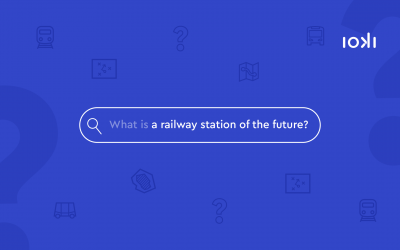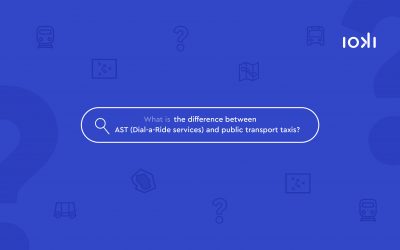As part of your research at the TU Hamburg, you have been working on the development of on-demand transport for quite some time. Where exactly do you see the opportunities in the introduction of such public transport services?
I see the greatest opportunities for on-demand services in an integration into the public transport system to strengthen it in the first and last mile. Often you can get close to your destination by train or metro bus, but then you have to walk a long way to get to your actual destination. Whether this is on the outskirts of the city or in the more rural areas.
Because of the low demand or the settlement structure of certain areas, it is incredibly difficult to open up these areas with classic bus routes. In certain areas buses won’t even fit through the streets or only very branched routes are possible. On the one hand, on-demand systems offer the opportunity to ensure a high degree of flexibility for users. In addition, such on-demand systems make it possible to offer attractive connections in these areas in the first place. At the same time, the large main public transport systems – for example, rapid transit and express buses – can in turn be supplemented and thus strengthened by on-demand services.
You played a key role in creating the study “On-demand services as a component of public transport”, which analysed our lighthouse project ioki-Hamburg. What key findings were you able to obtain with regard to the adaptation of usage patterns compared to conventional public transport services?
90% of the users of the on-demand service are regular public transport customers, owning a season ticket such as a monthly travel pass or a job ticket. Furthermore, almost three quarters of the users combine their ioki journeys with classic public transport, i.e. with the train or the bus. Thus, the on-demand offer strengthens the existing public transport on the main lines. This is also reflected in our findings on car use. In many cases, we observed a decrease in car use among users of the ioki service.
Other very positive findings were, on the one hand, that the on-demand service is used for special purposes that have not been typical uses of public transport so far. The transport of groceries for example. On the other hand, it has a special significance for certain user groups, such as mobility-impaired persons, for their independent mobility. This means that on-demand services are also a very good complement to classic public transport for these purposes or user groups.
Are there certain groups of people who use on-demand transport most frequently?
In fact, we could see an increased use by people with mobility impairments. For these people, the way to the next stop is a big and sometimes insurmountable hurdle. Therefore, direct access to the system, right in front of their doorstep, is a very decisive factor for their independent mobility. In addition, we see that especially women use the ioki service in the evening and at night. That’s because they feel much safer than having to walk alone through the streets from the bus or train stop.
What is so special about ioki-Hamburg?
What is special about ioki-Hamburg from our scientific perspective is definitely the continuous scientific monitoring of the project throughout its entire duration from the beginning until today. In addition, the conceptual orientation of ioki-Hamburg as a 24/7 service to complement and strengthen the existing public transport service with the adjacent S-Bahn lines and existing Metrobus lines should be emphasised. For us as researchers, the conceptual change brought by the introduction of the comfort surcharge was also very exciting, in order to see what effects such a comfort surcharge has on the use of this offer.
An interesting observation is the strengthening of the offer through the introduction of a so-called comfort surcharge. How can one imagine this – an increase in the use of the offer through a higher price? That sounds unusual…
Indeed, this sounds unusual at first. It is important to know that initially, only a valid HVV ticket was required for use. As a result, the system was literally overrun and in some cases simply abused by people booking journeys without actually taking them. Although the absolute number of users was very high, it was not very predictable for individual users whether they could spontaneously get a shuttle in the desired time window – i.e. “on-demand”. Let’s think, for example, of a visit to the theatre where it is not initially possible to clearly estimate when exactly you will be going home again. In the beginning, it was hardly possible to rely on being able to use a ride with ioki Hamburg at short notice for the way back. So in principle, I always needed a halfway acceptable alternative up my sleeve in case ioki was not available. After the introduction of the comfort surcharge, the absolute number of users declined, but the on-demand character of ioki Hamburg was strengthened. Now you can be reliably offered a shuttle “on-demand” even at short notice. This in turn has led to people who use ioki Hamburg to replace car journeys making greater use of the ioki service. At the same time, ioki Hamburg is now used less frequently by people who use it as a substitute for environmental means of transport – i.e. bus, train or bicycle.
Public transport is currently undergoing an exciting development in many ways. What do you think public mobility will look like in 2030?
We will see public transport with strong, highly frequented main lines. These will be supplemented in the urban districts and rural areas with flexible, digital on-demand services. In addition, there will be various rental services, from car-sharing to rental bikes and e-scooters, for the whole variety of uses. The bracket for all these offers will be a modern, integrated and modular tariff system. This tariff system will be based on classic public transport, which I can then supplement with other mobility services according to my personal needs.



